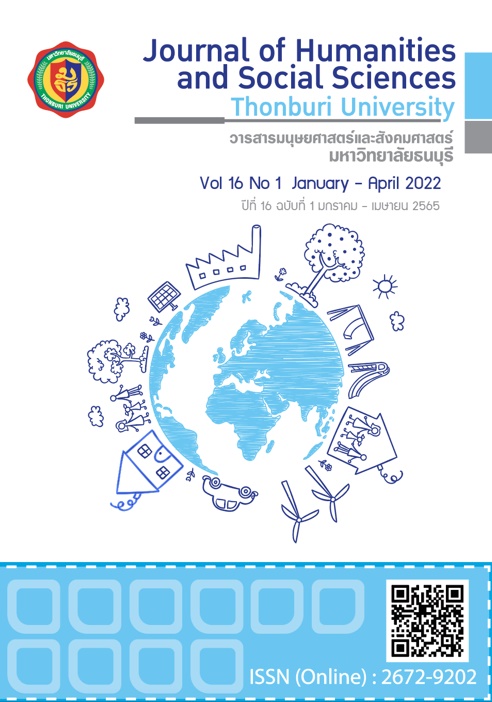The Forecast Scenario of Factors Effecting to the Recovery of Business Sectors after Covid-19 Crisis
Keywords:
Forecast, Business, Recovery, Covid-19Abstract
Today, the COVID-19 outbreak has increased in several waves of the past, affecting the country's economy. Therefore, studying of forecast and factors affecting the recovery of business groups after the COVID-19 situation is aimed at studying the forecast of recovery and the factors affecting the recovery of business groups after the COVID-19 situation by simulating recovery projections divided into 4 scenarios. The results of the study are scenario 1 Bounce Back includes industrial, finance, agro/food, resources/energy and technology will recover at any stage, scenario 2 Depression includes finance and agro/food will recover at every stage, scenario 3 Partial recovery, including industrial groups agro/food and technology will recover at any stage and scenario 4 Economic collapse situation in all business groups will not yet recover at every stage. As the results of 4 scenarios, can be summarized guidelines to recovery, it consists of 4factors which 1) Adjust work efficiency 2) Innovation to work. 3) Supervise employees to appropriate and 4) Evaluate the potential and provide partnerships to help support.
References
ARUP. Global Foresight, Arup. (2021). Business Recovery Scenarios. Retrieved May 10, 2021, from www.arup.com/perspectives/after-the-crisis-finding-business-clarity-and-opportunity.
Economic Research and Statistics Division. (2020). World Trade Organization. (WTO). Trade set to plunge as COVID-19 pandemic upends global economy, World Trade Organization. Retrieved May 10, 2021, from www.wto.org/english/news_e/pres20_e/pr855_e.htm#fntext-1.
Economic Research and Statistics Division. (2020). World Trade Organization. (WTO). Trade shows signs of rebound from COVID-19 recovery still uncertain. Retrieved May 10, 2021, from www.wto.org/english/news_e/pres20_e/pr862_e.htm.
Economist Intelligence Unit. (EIU). (2020). Sovereign debt crises are coming. Retrieved May 10, 2021, fromhttp://country.eiu.com/article.aspx?articleid=1499104133&Country=France&topic=Politics&subtopic=At+a+glance&oid=1669079150&flid=1099585293.
Herbert Smith Freehills (LLP). (2020). COVID-19 and foreign direct investment regulation - drawbridges continue to rise in response to the pandemic. Retrieved May 10, 2021, from www.lexology.com/library/detail.aspx?g=725393e0-08bf-4c39-8aad-b7932192e78a.
IMF (2020), Fiscal Monitor: Policies for the Recovery, [accessed: 11 May 2021]. https://www.imf.org/en/Publications/FM/Issues/2020/09/30/october-2020-fiscal-monitor.
Institute for Health Metrics and Evaluation. (2020). COVID-19 Projections. Retrieved May 10, 2021, from http://www.healthdata.org/covid/data-downloads.
Kees van der Heijden (2011). The Art of Strategic Conversation. 2nd Edition.
Organization for Economic Co-operation and Development. (OECD). (2020). Quarterly GDP (indicator). Retrieved May 10, 2021, from https://data.oecd.org/gdp/quarterly-gdp.htm.
Pakorn Peetathawatchai. Stock Exchange of Thailand. (SET). (2020). market value in 2020. Retrieved May 10, 2021, from https://www.bloomberg.com/profile/person/7097106.
The Stock Exchange of Thailand (SET). (2020). Data Business group in April 2020. Retrieved May 10, 2021, from www.set.or.th/set/holiday.do?language=en&country=US.
World economy. Economist Intelligence Unit. (EIU). (2020). Forecast summary. Retrieved May 10, 2021, from https://gfs.eiu.com/Article.aspx?articleType=gef&articleId=860156069&secId=0.
World Trade Association. (WTA). (2020). COVID-19: Trade and trade-related measures. Retrieved May 10, 2021,from www.wto.org/english/tratop_e/covid19_e/trade_related_goods_measure_e.htm.







